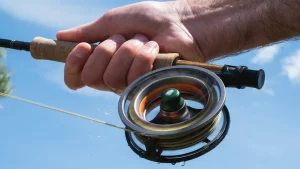Setting the drag on your fly fishing reel is a crucial yet often overlooked aspect of fly fishing. Proper drag adjustment ensures you can fight powerful fish without breaking your tippet or losing the catch of the day. Here’s a detailed guide on how to set drag effectively to maximize your success on the water.
Why Drag Settings Matter
In fly fishing, drag refers to the resistance a fish feels when it pulls on your line. Properly adjusted drag helps tire out strong fish, allowing you to gain control without snapping your leader. Conversely, a poorly set drag can lead to lost fish or broken equipment, making it a pivotal aspect of your fly fishing strategy.
Step-by-Step Guide to Setting Drag
- Understand the Drag Mechanism on Your Reel Fly reels typically feature a disc or click-and-pawl drag system. Disc drags offer smooth resistance and are ideal for targeting larger fish, while click-and-pawl systems provide lighter resistance, suitable for smaller species.
- Match Drag to Tippet Strength A general rule is to set your drag at about one-third of your tippet’s breaking strength. For example, if you’re using a 6-pound tippet, aim for a drag setting around 2 pounds. This ensures enough give to prevent line breakage while providing sufficient resistance to tire fish.
- Adjust for Fish Behavior and Conditions When fishing for hard-fighting species, start with a medium drag setting. If the fish makes strong runs, back off slightly to reduce pressure. Conversely, if it tires, increase drag to maintain control. Adjusting on the fly is crucial for dealing with unpredictable fights.

Practical Drag Setting Tips
- Dry Run: Before heading out, practice setting your drag by simulating a fish pulling on the line. This helps gauge resistance and find an optimal setting.
- Check Often: Water conditions, line wetness, and fish size can impact drag. Periodically adjust during a session to stay ahead of changing conditions.
Fine-Tuning Your Technique
Reeling while applying steady pressure with your hand can supplement drag resistance, especially when battling exceptionally strong fish. This technique, known as palming, adds a manual element to drag control for more nuanced fights.
Mastering drag settings on your fly reel is vital for landing more fish and preserving your tackle. Experiment with different settings and fine-tune as needed based on fish species and conditions. Start your next fly fishing adventure confidently with these drag-setting techniques.
Image: themeateater





